Related Research Articles

The Watergate scandal was a significant political controversy in the United States during the presidency of Richard Nixon from 1972 to 1974, ultimately resulting in Nixon's resignation. It originated from attempts by the Nixon administration to conceal its involvement in the June 17, 1972, break-in at the Democratic National Committee headquarters located in the Watergate Office Building in Washington, D.C.
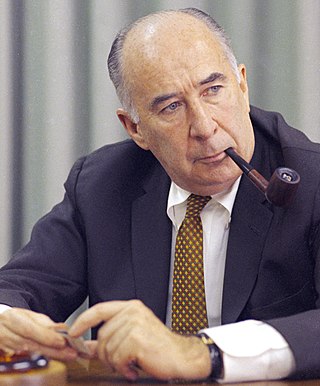
John Newton Mitchell was the 67th Attorney General of the United States, serving under President Richard Nixon and was chairman of Nixon's 1968 and 1972 presidential campaigns. Prior to that, he had been a municipal bond lawyer and one of Nixon's associates. He was tried and convicted as a result of his involvement in the Watergate scandal.

United States v. Nixon, 418 U.S. 683 (1974), was a landmark decision of the Supreme Court of the United States in which the Court unanimously ordered President Richard Nixon to deliver tape recordings and other subpoenaed materials related to the Watergate scandal to a federal district court. Decided on July 24, 1974, the ruling was important to the late stages of the Watergate scandal, amidst an ongoing process to impeach Richard Nixon. United States v. Nixon is considered a crucial precedent limiting the power of any U.S. president to claim executive privilege.

Leonidas "Leon" Jaworski was an American attorney and law professor who served as the second special prosecutor during the Watergate scandal. He was appointed to that position on November 1, 1973, soon after the "Saturday Night Massacre" of October 19–20, 1973, which included the dismissal of his predecessor Archibald Cox.

Louis Patrick Gray III was acting director of the Federal Bureau of Investigation (FBI) from May 3, 1972, to April 27, 1973. During this time, the FBI was in charge of the initial investigation into the burglaries that sparked the Watergate scandal, which eventually led to the resignation of President Nixon. Gray was nominated as permanent Director by Nixon on February 15, 1973, but failed to win Senate confirmation. He resigned as Acting FBI director on April 27, 1973, after he admitted to destroying documents that had come from convicted Watergate conspirator E. Howard Hunt's safe—documents received on June 28, 1972, 11 days after the Watergate burglary, and given to Gray by White House counsel John Dean.

John Wesley Dean III is an American attorney who served as White House Counsel for U.S. President Richard Nixon from July 1970 until April 1973. Dean is known for his role in the cover-up of the Watergate scandal and his subsequent testimony to Congress as a witness. His guilty plea to a single felony in exchange for becoming a key witness for the prosecution ultimately resulted in a reduced sentence, which he served at Fort Holabird outside Baltimore, Maryland. After his plea, he was disbarred.
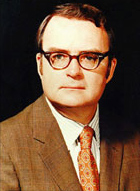
William Doyle Ruckelshaus was an American attorney and government official.
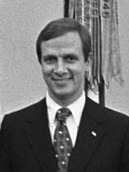
Gordon Creighton Strachan is an American attorney and political staffer who served as an aide to H.R. Haldeman, the chief of staff for President Richard Nixon and a figure in the Watergate scandal.
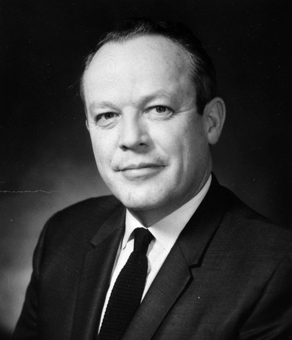
Richard Gordon Kleindienst was an American lawyer, politician, and U.S. Attorney General during the early stages of Watergate political scandal.

Leonard Garment was an American attorney, public servant, and arts advocate. He served U.S. presidents Richard Nixon and Gerald Ford in the White House in various positions from 1969 to 1976, including Counselor to the President, acting Special Counsel to Nixon for the last two years of his presidency, and U.S. Ambassador to the Third Committee at the United Nations.
John Patrick Sears was an American attorney, and a Republican political strategist. He served as Deputy Counsel to President Richard M. Nixon from 1969–70, and assisted both Nixon and Ronald Reagan in their presidential campaigns.

Martha Elizabeth Beall Mitchell was the wife of John N. Mitchell, United States Attorney General under President Richard Nixon. Her public comments and interviews during the Watergate scandal were frank and revealing.
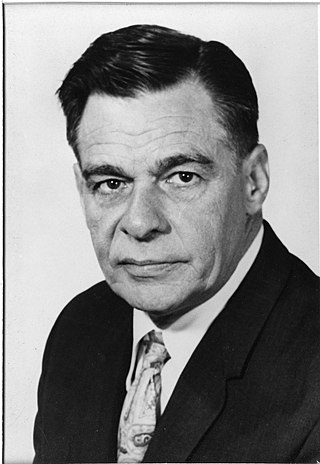
Henry E. Petersen was an attorney and United States federal government official. He served as Assistant U.S. Attorney General during the Richard Nixon and Gerald Ford administrations. He also engaged in ethically questionable communications with Nixon and his staff, providing inside information about the Watergate investigation prior to the appointment of the Special Prosecutor.

Gao Xiqing is the former Vice Chairman, President and Chief Investment Officer of the China Investment Corporation, China's largest sovereign wealth fund.
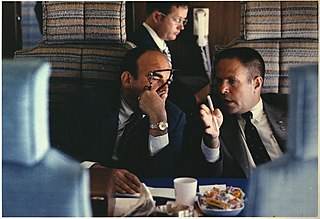
Operation Sandwedge was a proposed clandestine intelligence-gathering operation against the political enemies of U.S. President Richard Nixon's administration. The proposals were put together by Nixon's Chief of Staff H. R. Haldeman, domestic affairs assistant John Ehrlichman and staffer Jack Caulfield in 1971. Caulfield, a former police officer, created a plan to target the Democratic Party and the anti-Vietnam War movement, inspired by what he believed to be the Democratic Party's employment of a private investigation firm.
Richard Lyman Cates was an American Democratic politician and trial lawyer from Wisconsin.
Studebaker-Worthington was a diversified American manufacturer created in 1967 through a merger of Studebaker Corporation, Wagner Electric and Worthington Corporation. The company was in turn acquired by McGraw-Edison in 1979.

Randolph H. Guthrie was an American lawyer and businessman who became the chairman of the Studebaker corporation.
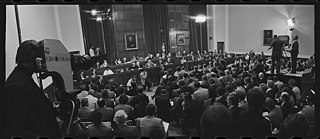
The impeachment process against Richard Nixon was initiated by the United States House of Representatives on October 30, 1973, during the course of the Watergate scandal, when multiple resolutions calling for the impeachment of President Richard Nixon were introduced immediately following the series of high-level resignations and firings widely called the "Saturday Night Massacre". The House Committee on the Judiciary soon began an official investigation of the president's role in Watergate, and, in May 1974, commenced formal hearings on whether sufficient grounds existed to impeach Nixon of high crimes and misdemeanors under Article II, Section 4, of the United States Constitution. This investigation was undertaken one year after the United States Senate established the Select Committee on Presidential Campaign Activities to investigate the break-in at the Democratic National Committee headquarters at the Watergate office complex during the 1972 presidential election, and the Republican Nixon administration's attempted cover-up of its involvement; during those hearings the scope of the scandal became apparent and the existence of the Nixon White House tapes was revealed.
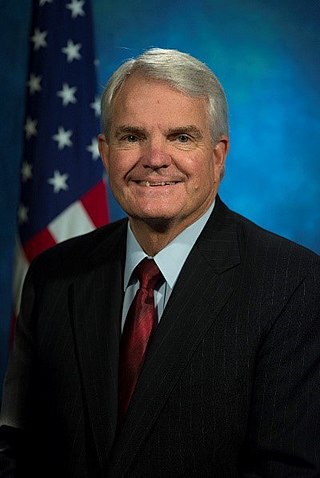
Stephen B. King is an American businessman and political activist who served as the United States Ambassador to the Czech Republic from 2017 to 2021. A member of the Republican Party, he is the founder of King Capital LLC, an equity investment and real estate company. He previously worked at the Federal Bureau of Investigation (FBI) as an agent and campaigned unsuccessfully in 1988 for his party's nomination for the U.S. Senate in Wisconsin. During the Nixon administration, while working for the Committee for the Re-Election of the President, King was involved in the kidnapping of Martha Mitchell, the wife of the then-Attorney General.
References
- ↑ James J. Florio (2018). Standing on Principle: Lessons Learned in Public Life. Rutgers University Press. pp. 243–. ISBN 978-0-8135-9433-0.
- ↑ Torry, Saundra (22 November 1993). "Leonard Garment finds a challenge in expansion puzzle" . Retrieved 22 July 2017– via washingtonpost.com.
- 1 2 "Lawyers: The Factories". Time magazine . 24 January 1964. Archived from the original on December 14, 2011. Retrieved 22 July 2017– via time.com.
- ↑ Galbraith, John Kenneth (30 July 1973). "How the Great New York Lawyers let us Down". New York Magazine. New York Media, LLC. Retrieved 22 July 2017– via Google Books.
- ↑ "The Personal Papers of John Kenneth Galbraith (1908-2006)". CiteSeerX 10.1.1.362.1963 .
- ↑ "Milton C. Rose, 97, Lawyer At Firm of Nixon and Mitchell". The New York Times. 21 March 2002. Retrieved 22 July 2017.
- 1 2 Goldberg, Carey (1 October 1995). "The Mudge Rose Firm Enters the Tar Pit of Legal History". The New York Times . Retrieved 29 September 2014.
- ↑ "In Search of Deep Throat". The New York Times . Retrieved 2018-09-20.
- ↑ Garment, Leonard (25 October 2001). Crazy Rhythm: From Brooklyn And Jazz To Nixon's White House, Watergate, And Beyond . Da Capo Press, Incorporated. p. 62. ISBN 9780306810824 . Retrieved 22 July 2017– via Internet Archive.
Nixon-Mudge.
- ↑ Paul Moorehead (July 22, 2013). "Radical Enlightenment: The Man Behind Nixon's Federal Indian Policy". Indian Country Media Network. Retrieved 22 July 2017.
- ↑ LESLEY OELSNERMAY 11, 1973 (1973-05-11). "A Time of Trouble Looms for Mitchell Firm - The New York Times". The New York Times . Retrieved 2018-09-20.
{{cite web}}: CS1 maint: numeric names: authors list (link) - ↑ Mintz, Morton (30 August 1977). "Law Firm Accused of Aiding One Client Over Another". Washington Post. Retrieved 22 July 2017– via washingtonpost.com.
- ↑ "Mitchell Takes Leave From His Law Office - The New York Times". The New York Times . 1973-05-12. Retrieved 2018-09-20.
- ↑ By FRED P. GRAHAMFEB. 16, 1972 (1972-02-16). "Mitchell Quits; Nomination Goes To Kleindienst - The New York Times". The New York Times . Retrieved 2018-09-20.
{{cite web}}: CS1 maint: numeric names: authors list (link) - ↑ Reeves, Richard (20 December 1971). "Mitchell Redux". New York Magazine. New York Media, LLC. Retrieved 22 July 2017– via Google Books.
- ↑ Staff and Wire Reports (10 November 1988). "John Mitchell, Key Watergate Figure, Dies at 75" . Retrieved 22 July 2017– via LA Times.
- ↑ By TOM GOLDSTEINSEPT. 20, 1975 (1975-09-20). "Court Rejects a Nixon Bid To Resign From State Bar - The New York Times". The New York Times . Retrieved 2018-09-20.
{{cite web}}: CS1 maint: numeric names: authors list (link) - ↑ TOM GOLDSTEINJULY 9, 1976 (1976-07-09). "New York Court Disbars Nixon for Watergate Acts - The New York Times". The New York Times . Retrieved 2018-09-20.
{{cite web}}: CS1 maint: numeric names: authors list (link) - ↑ "Paid Notice: Deaths: ROBINSON, DONALD J." 22 June 2014. Retrieved 22 July 2017– via NYTimes.com.